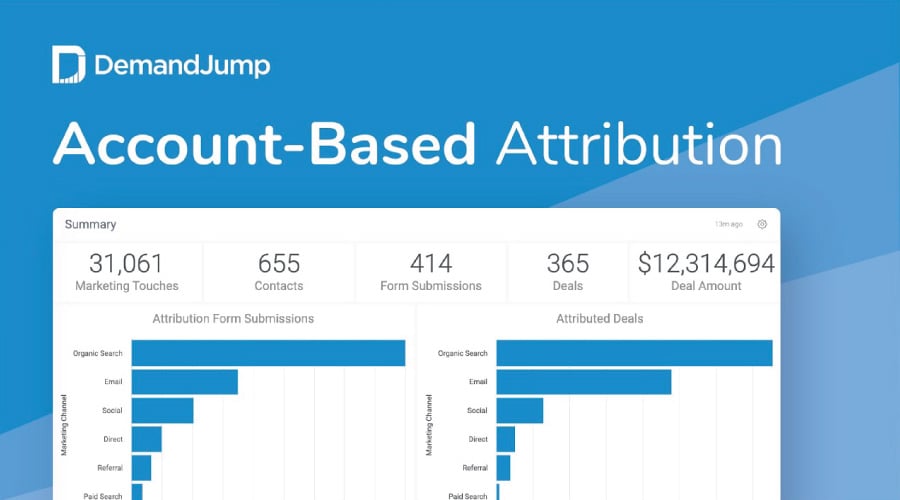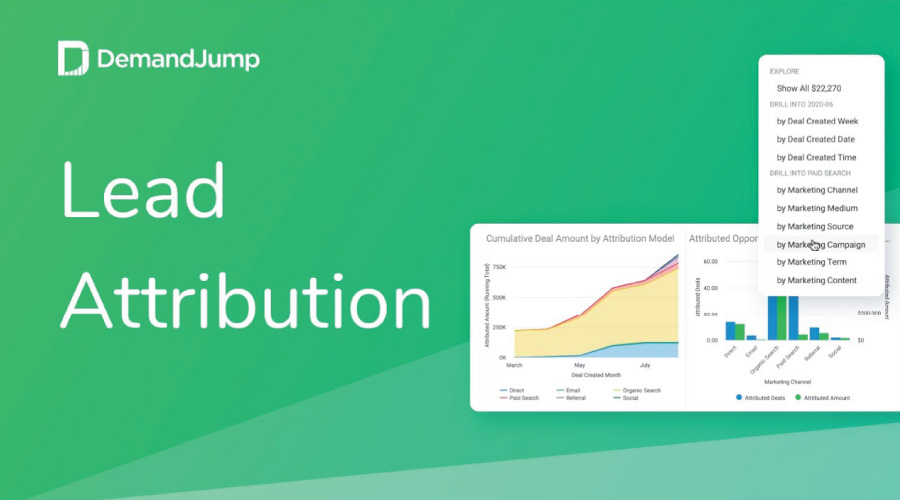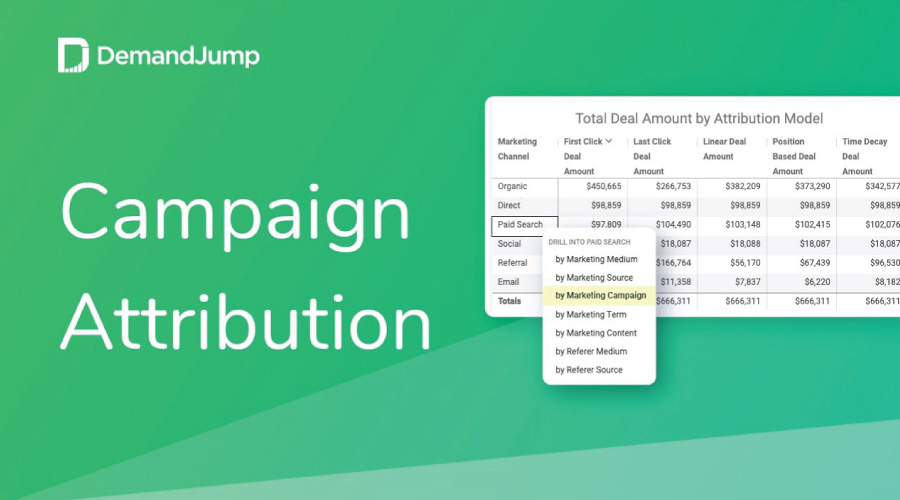Marketing Attribution
By embracing DemandJumps approach to SEO, we have been able to increase our organic rankings within just 2 weeks of implementing recommendations. This helped us see a 22% increase in organic search month-over-month.
Robert Jacko Vice President Digital Marketing @ Homage
DemandJump has become a crucial extension of our marketing team, providing game changing insights to fuel and propel all aspects of our digital marketing efforts. The DemandJump platform is a must have, we are seriously impressed.
Tim Lavinder Director of Ecommerce @ Hotsox
We used to spend hours looking for insights in dozens of tools and reports. Now we log into one place to find out what customers are doing and how to meet them where it matters most.
Zach Roop Digital Marketing Manager @ Dometic
We use DemandJump recommendations as our digital to-do list. We love going in and seeing the recommendations and knowing what to do next.
JoLynda Wilson Marketing Director @ IWC
Our Customers Love Attribution






Account-Based Attribution
Eliminate wasted time and spend. With DemandJump's automated account-based attribution
solution you will know with certainty which efforts are driving ROI.
Measure Your Marketing Performance
Find out which of your marketing efforts are making the biggest impact. See which channel drove consumers to you, the pages they visited, and all touchpoints along their path to purchase.
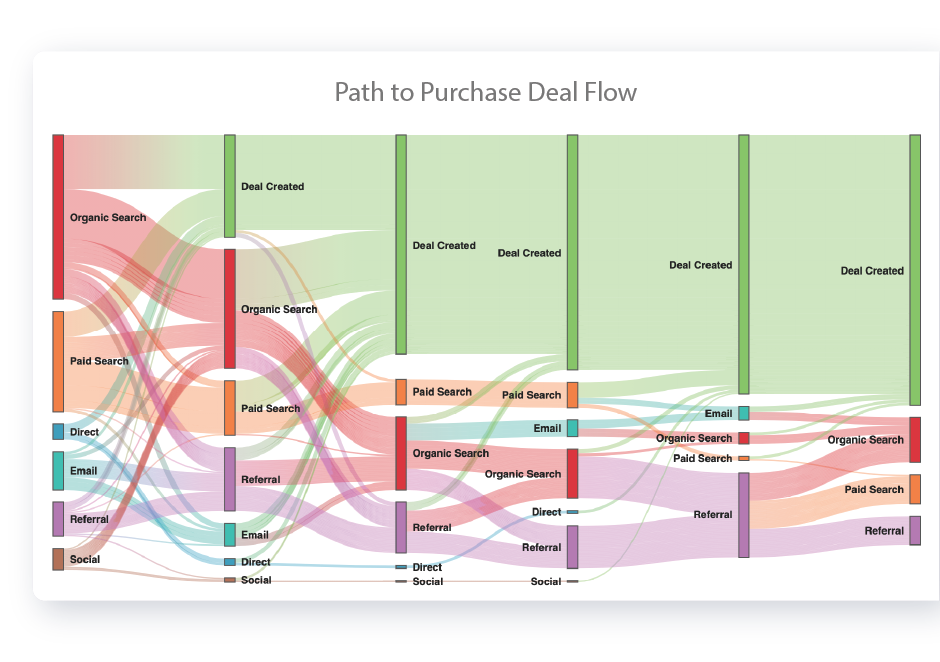
From Marketing Spend to Actual Pipeline Value
When a lead becomes a customer, you need to know which marketing channel or campaign should receive credit, and account-based attribution will give you the answers.
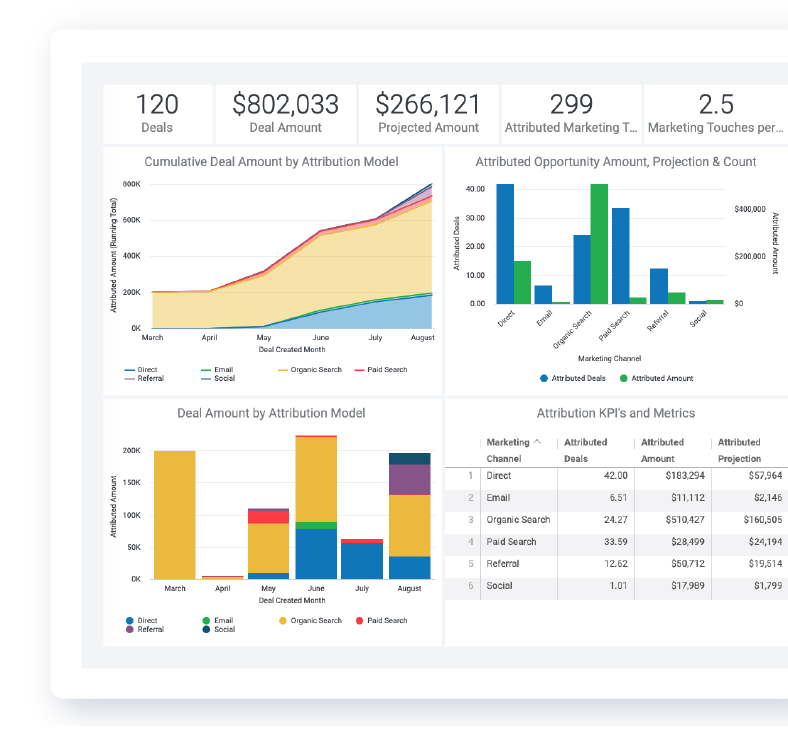
Organic & Paid Search Keyword Attribution
Beyond channel, campaign, and content attribution, you will finally see which organic and paid keywords are generating deal and opportunity revenue.
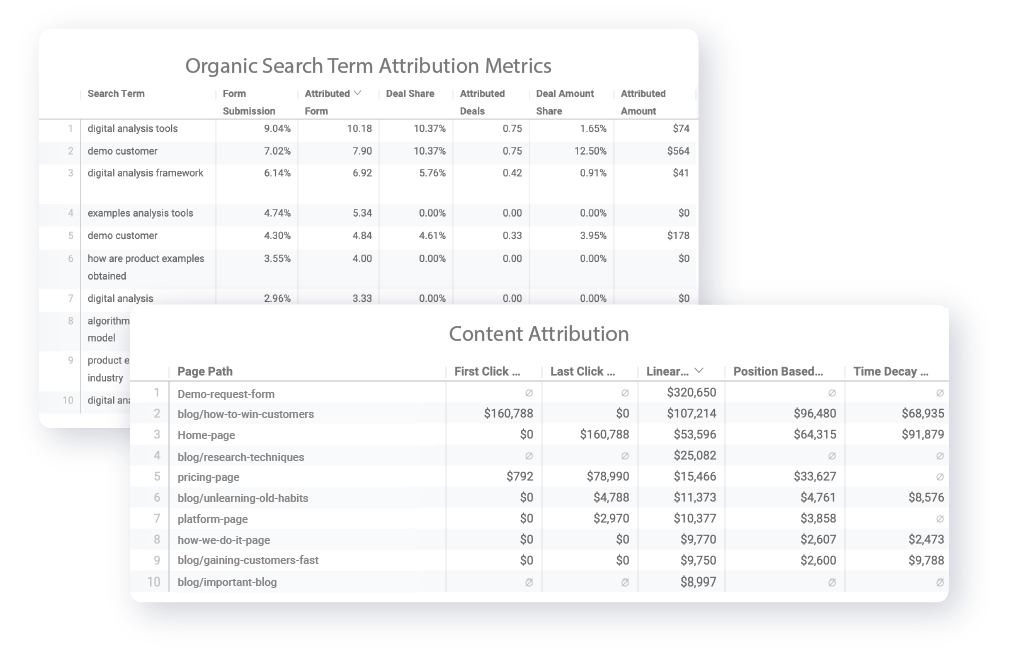
See a Demo of Attribution
Attribution Tracking
Getting a Handle on Attribution Tracking
Attribution tracking is something that many marketers struggle with. There are a few different reasons for this. With access to so much data, it becomes a virtual puzzle to gather and use each bit of information effectively. You might have automated areas of your marketing campaigns to alleviate some of the manual needs and used solutions to gather data points throughout your customers journey, but you still end up with a lump of data rather than valuable insights. You are not alone, marketers everywhere have this same problem.
Access to information is great, but it does make the process of finding and acting on insights any less daunting. In fact, oftentimes it feels like the more data you have the harder it is to make sense of it. Creating an attribution model is the way you make sense of that data. Attribution is how value is assigned to different marketing channels when it comes to set conversion events. In some cases it is website traffic and in some cases it is revenue producing conversion events.
When we talk about attribution models, these are techniques to help analyze all of the data you collect and determine how well your campaigns are working and which channels are performing optimally. The attribution models weigh where your audience comes from and showcases how they move through the funnel to conversion. There are many different models that you can take advantage of. Most marketers use more than one model to gain a comprehensive picture of their audience and how well each of their channels is working.
>What is an attribution model?
In marketing attribution, there is no steadfast or correct way to go about attribution tracking. The techniques that work for your marketing team may be unique to your audience, marketing position, and the type of content you're creating. Marketers also have to keep in mind that a single attribution model will give them a finite amount of information. For instance, first click attribution will tell you how the user first made contact with your brand. That first contact typically does not convert to a sale, but it can be an important touchpoint. Measuring your last touch before the sale might give you a good idea of messaging that leads to decision making, but you also have to bear in mind that the customer may have already built an image of your brand from a past contact and so a last touch attribution model may not be the perfect fight either.
All of these different attribution models work together to help you form a comprehensive picture of how your audience interacts with your brand along their path to purchase. One of the uses of attribution modeling is to help build a better line of communication and foster relationship-building in your content across all of your channels. Looking at your whole content strategy, there may be several channels that you use for your marketing campaigns. These might include website content, social media marketing, email campaigns, and Google ads. To add to your online marketing initiatives, you may also have offline campaigns and these should also be included in your attribution modeling.
Offline ads can be more difficult to attribute (Not at DemandJump. We have a solution that encompasses online and offline attribution.). That is because it is much easier to collect accurate data for online touchpoints. A more involved process is needed to capture data from billboards, flyers, in-person visits, phone calls, tv and radio ads, and point of sale advertising. You also have to realize that you won't capture all of these impressions.
When you determine your attribution model, you're weighing the impact of each touchpoint. The trick is being able to analyze all of the data and continuing to gain insights as more information presents itself. Making assumptions based on limited data can be tempting but it often will limit the ROI from your campaigns, and in some cases lead to making decisions that result in poor performance.
How to Measure Marketing Attribution
Measuring channel performance and determining which marketing attribution model works best takes some analysis and often times depends on the industry and market. There is no one size fits all model to follow. There are many theories and techniques. The reality is that you may need to use a few different attribution models in order to find out which one is best for the given situation or analysis. Many marketers use more than one model - great marketers use several.
>Here are a few of the most popular models and why they are used:
- First Touch Attribution Model: The first touch is a single touch attribution model. This attributes all of the credit for a given conversion to the first marketing touchpoint. In some cases this is great, but in many cases it does not give the full picture. It doesn't gather or analyze any of the other points where the target audience may have connected between the first contact point and conversion. Many marketers will use this as ONE of their attribution models, but they will have others they also use in order to gather data throughout the customer’s path to purchase.
- Last Click Attribution Model: Like first touch attribution, the last click is a single touch attribution model. In this case, you are attributing all credit to the last touchpoint before conversion. Again, most marketers use last touch as a part of their attribution analytics but they also use other models to gather a comprehensive view of the customer journey.
- Position Based Attribution Model: This is sometimes called the "U Shaped" attribution model. If you lined up all of the analytics for your various channels in a graph and placed the first touch on one end and the last touch on the other, they would form a "U". In position based attribution the majority of credit is attributed to the first and last touch with minor credit attributed to the touchpoints in between. There are other ways to configure a position based model. Two points is the most common but can give the majority of credit to 3+ touchpoints if the situation calls for it.
- Time Decay Attribution Model: The time decay model spreads out the credit for the conversion based on where in the funnel they occur. The last touchpoint for time decay gets the highest percentage of credit, with touchpoints directly before that one receiving less credit by increments. For this reason, the time decay model gives very little credit to the first touch. So if you're using this model, it might be wise to add first touch attribution to your analytics, as well.
- Linear Attribution Model: The linear attribution model attributes credit evenly among all touchpoints. Like the time decay attribution model, this model gives a more comprehensive dataset on other touchpoints that are of value in the funnel. The problem with this one is that it equally distributes the credit, but that's likely not accurate in reality. Some touchpoints will have more impact on your conversion. Discussion with a sales associate may have a great deal more impact than a first visit to the website through organic search, but they both have the same numerical value in the analytics.
- Custom Attribution Models: Customer models are generally going to be the most well rounded and specific to your business and marketing plan. This is an attribution model created specifically based on the usability of your analytics in the past and the insights you've already determined. In this case, you're creating the model and assigning weight to different touchpoints based on known information about past performance. (Let DemandJump help build your automated custom attribution model.)
Determining the best models to use is dependent on your specific business needs. As a marketer, you need to be open to pivoting when one model is not telling the full story and be open to looking at multiple models as you begin to plan future spend. There are marketers who prefer certain models for their own reasons. Other marketers are open to using a variety in tandem. Still more have a bias against certain models. For instance, many marketers see no point in single touch attribution. They don't believe it gives a full picture and it needs to be augmented too much with other models. Those marketers might prefer a linear model or a customer model in order to gather a fuller picture of all of the touchpoints in their funnel.
What is multi touch attribution?
Multi channel attribution is like the pie in the sky ideal. You'll hear marketers say that multi touch attribution is dead. It's not. It is very much alive. Multi touch attribution is what you need to focus on if you want to gather as actionable insight into your customer’s true path to purchase. And you do need these insights.
Multi touch attribution is very useful but it has gotten significantly more difficult to accomplish. Part of this is due to the platform changes that make gathering your attribution across all of your channels more difficult than it needs to be. So there are technical difficulties that you need to work around with multi touch and you also need to understand the limitations of your analytics.
When we discussed the models above, we touched on some of the problems with each method. There really is no method that will definitively give you all of the information that you need. Savvy marketers develop their insights through a wide swath of data and a good ability to assign weight to each piece of analytics.
Virtually all businesses use multiple channels. You won't find many businesses online today that don't have several ways to get in front of customers. Even if you're only using your website and one social media account, that is still two channels. Most businesses use far more. They include email marketing campaigns, newsletters, multiple social media accounts, videos, and SMS advertising. That's not even a complete list of the possible digital assets involved in a campaign. Brick and mortar businesses also have offline contact points, even if they're not actively pursuing advertising or PR options. Any time a customer has contact with an employee, that is a contact point that should be considered in comprehensive attribution models.
Marketing has evolved to the point that customers expect the same company, the same branded messaging, and the same experience, no matter where they are when they interact with your business.
Multi Touch Attribution vs Marketing Mix Modeling
Multi touch attribution solutions are often talked about in tandem with marketing mix modeling, but they are different techniques. Many marketers and business professionals have been using the marketing mix for decades. This strategy does not only deal with marketing, it equates marketing with business initiatives so that you're compiling all of the pertinent information to determine ROI on your initiatives. Marketing mix modeling is geared to assess past performance, develop forecasts, and determine future spend and in which areas that investment is necessary. MMM looks at business initiatives, product development, and marketing initiatives to determine financial needs and gains.
Multi touch attribution deals specifically with all marketing initiatives, but most often the digital channels. It should be employed on all channels for a more robust analysis of marketing performance. Multi touch attribution develops a credit system for each of the channels used in your campaigns and every touchpoint for customers. It is still used to determine marketing spend and to verify ROI on past and future campaigns. Marketers would use multi touch attribution in their reports to request budgetary needs for future campaigns and to develop their marketing plan.
Figuring Out Lead Attribution
There can be attribution problems with virtually every type of modeling. This makes determining which lead attribution model to use slightly more daunting. The attribution analysis marketing methods you do use will have some both flaws and benefits. The best way to go about this is to start with your questions. What do you want to know? What insights are you trying to gather? What is your overall goal?
Those answers will help you determine which methods can give you the best insights. For instance, we talked about the limitations of first-click attribution. It weighs only the first contact point and there may be many contact points before a customer converts. But what if your question is how to attract new audience members? What if you're trying to increase traffic, rather than aiming solely for conversion? The first touch attribution model may be highly informative for that goal.
Your goals will change over the course of a business’s lifetime. Newer businesses often need to spend a great deal of time amplifying their message and building awareness. You won't be able to increase conversion rates with no visitors. As your business expands, grows, or evolves, your goals will naturally change. The attribution models you use may need to evolve, as well.
Once your main focus is no longer traffic, your focus might be relationship-building or conversion itself. Modeling techniques that might be more informative for this would include linear and custom modeling. If you're looking for a data driven attribution model to develop your Google ads, that process will be different from the one you use to determine how to improve customer retention. There really is no right or wrong answer. Each of these attribution models will provide you with actionable data. You'll find that some models will provide better insights for your purpose.
Performance Attribution Software
Using software to help with your web attribution models can be an excellent investment. It takes the guesswork out of compiling all of the analytics across different digital platforms. A good performance attribution software can help you determine the right modeling in order to assign value to your touchpoints. It also helps you understand the ROI for your various campaigns and marketing initiatives so that you can see how your channels perform with regard to the financial investment you've made.
This software helps you put all of the information together on one platform so that you can easily develop reporting options, see analytics, and develop a competitive analysis to stay informed on the rest of the businesses in your marketing space. There are different vendors and models to choose from in this space. In order to find the best option for your business, you'll want to determine the full scope of tools, the usability of the software with your current technology, customer service and training of the vendor for your marketing team, and the cost.
There are performance attribution options available in your Google analytics and in the analytics on other platforms. In Google Analytics, you'd use a data driven attribution model in your attribution model for display advertising. When you're dealing with multiple contact points, using a platform that can help you keep and analyze all of your channels together is a huge time saver and can help you develop better insights. Google Analytics attribution models often fall short because they do not include all channels. DemandJump’s automated attribution platform provides many different attribution models that include all marketing channels via our many available integrations. Reach out today for a free demo.
Attribution tracking is a difficult thing to master because there are so many possible ways to approach your modeling. When there are no wrong answers, it can be difficult to choose the best techniques. The sheer volume of available data makes the analysis more complicated, but it also makes developing a solid strategy for your attribution a necessity.
Marketing Attribution Resources
Marketing AttributionAttribution Tracking
B2B Marketing Attribution
Hubspot Attribution
Marketing Campaign Influence
Mobile Attribution
Multi Touch Attribution
Offline Attribution
Sales Forecasting
Sales Opportunity Attribution
The Future of Data-Driven Marketing
Opportunities of Internet Marketing
Other Resources
Channel Optimization
Consumer Behavior
Consumer Insights
Consumer Insights and Analytics
Competitor Analysis Tools
Content Marketing
Content Strategy
Cross-Channel Analytics
Customer Insight Research Techniques
Customer Journey Map
Market Intelligence
Marketing Analytics Techniques
Market Research
Marketing Attribution
Opportunities of Internet Marketing
Types of Consumer Insights



